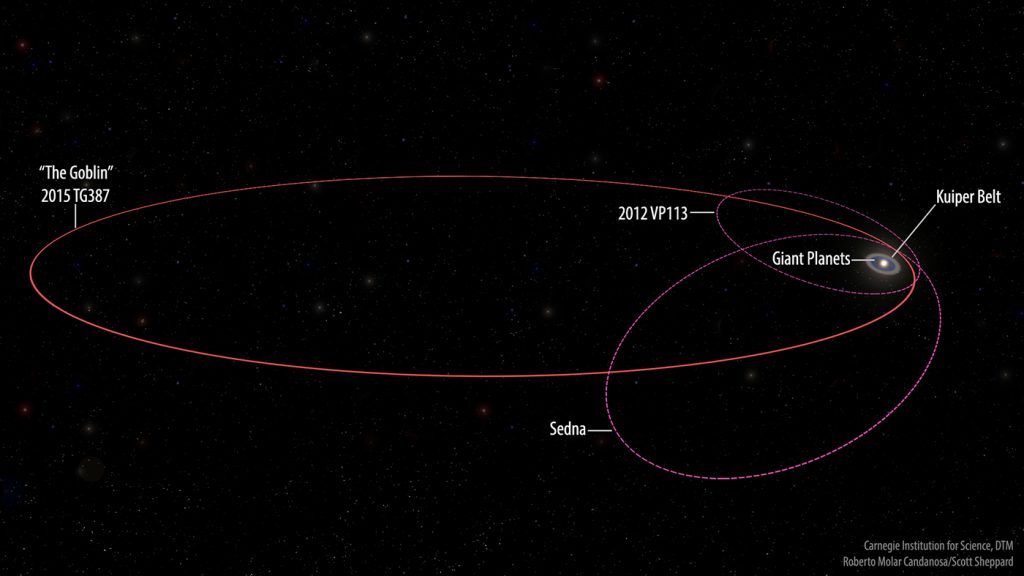News
A Small Planet With Big Implications
By: Joe Palca | NPR
Posted on:
Astronomers have found — way beyond the orbit of Pluto — an intriguing distant object orbiting the sun.
It’s just a dwarf planet, about 200 miles across, but some researchers think finding it increases the likelihood that there is a heretofore undiscovered giant planet lurking in the outer reaches of our solar system. That would bring the number of true planets in our solar system back to nine, replacing Pluto which was demoted in 2006.
Scott Sheppard and his colleagues at the Carnegie Institution for Science first spotted the new object, known officially as 2015 TG 387, around Halloween three years ago, so they gave it the nickname “The Goblin.”

At first, all they knew about The Goblin was its distance from the sun: 7.5 billion miles. Astronomers can tell the distance of an object by how fast it moves across the sky. Objects close to the sun move rapidly, objects farther away more slowly. The speed gives the distance.
“But that’s all we can say,” says Sheppard. “We can’t really say anything about its orbit.”
It’s the orbit that tells astronomers whether the object is just a distant object, or whether it’s an interesting distant object.
In Sheppard’s case, an interesting object is one that never gets close to the sun, and has a non-circular orbit. Such objects defy the normal expectations of how planets and asteroids form.
It took several years of measurement, but now Sheppard says they have a pretty good idea of The Goblin’s orbit, and it’s definitely interesting.
First, unlike Earth and most of the rest of the objects in our solar system, its’ orbit isn’t even close to round. It’s an elongated ellipse.
Next, it takes 40 thousand years to make a single revolution around the sun, and it never gets closer to the sun than 6 billion miles. That’s about twice as far as Pluto is from the sun.
Juliette Becker is an astronomer at the University of Michigan. She says the current models of planetary formation that don’t explain The Goblin could be wrong, but “an easier solution is the existence of Planet Nine, because it naturally creates these objects in the solar system.”
The gravity of big planets like Jupiter or Neptune can sling smaller objects into weird orbits if they happen to wander by. But The Goblin doesn’t get anywhere near Jupiter or Neptune, so astronomers think another planet, nicknamed Planet Nine, might be out there doing the slinging.
Becker says astronomers have only found a handful of objects in addition to The Goblin that point to the existence of Planet Nine, so there is considerable skepticism that it’s really out there.
But, she says “we’re a lot closer to having enough objects” to give her more confidence that Planet Nine exists.
“I guess I have kind of a ticker in my mind of how many objects do we need,” Becker says. “Right now we obviously don’t have enough, but this particular object is such a unique orbit and it’s so useful that the ticker in my mind just jumped up.”
Several teams or astronomers are already sufficiently convinced to be actively scanning the sky for this new giant planet.
So far, no luck.
Full details about The Goblin have been submitted to The Astronomical Journal.
9(MDI4ODU1ODA1MDE0ODA3MTMyMDY2MTJiNQ000))


